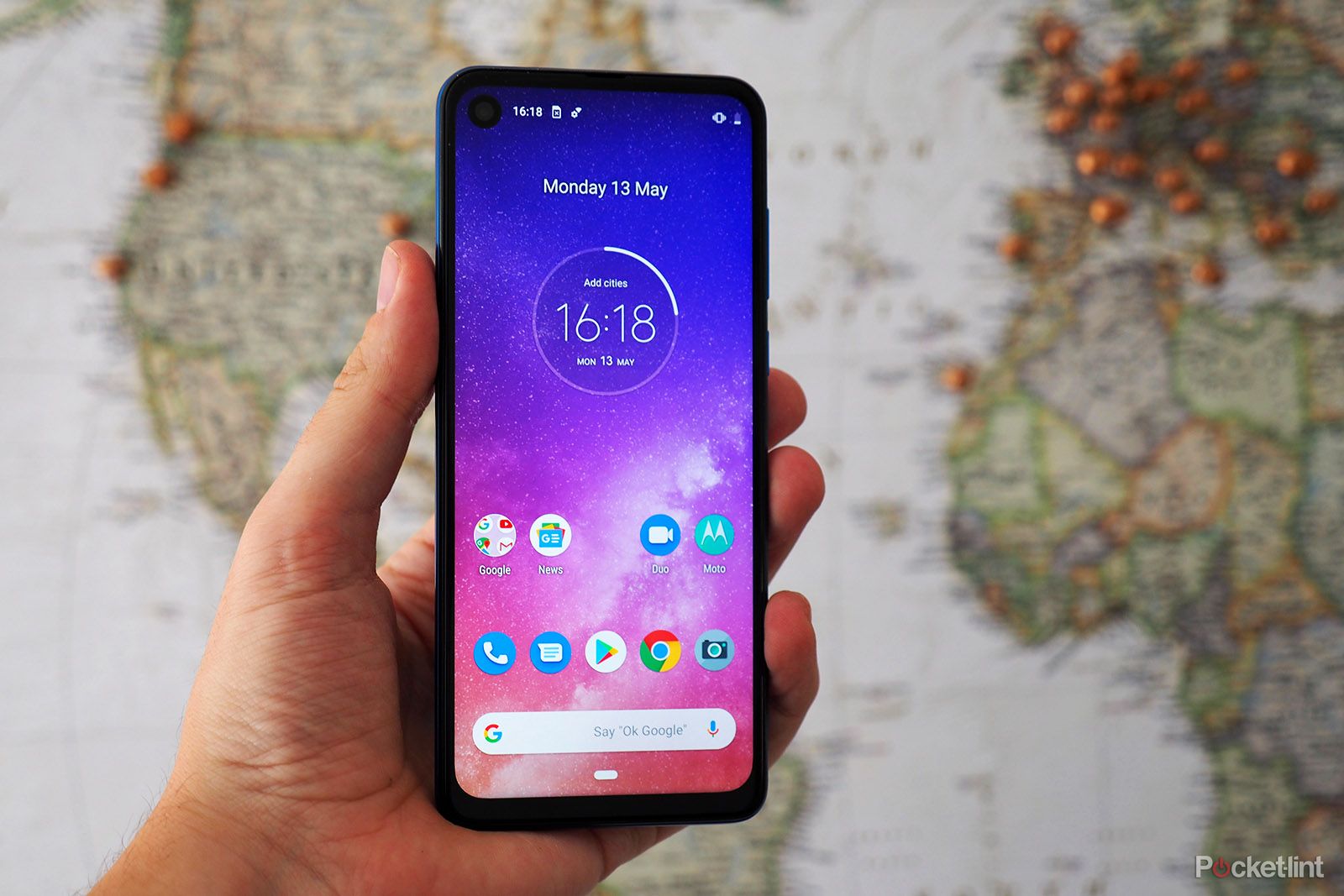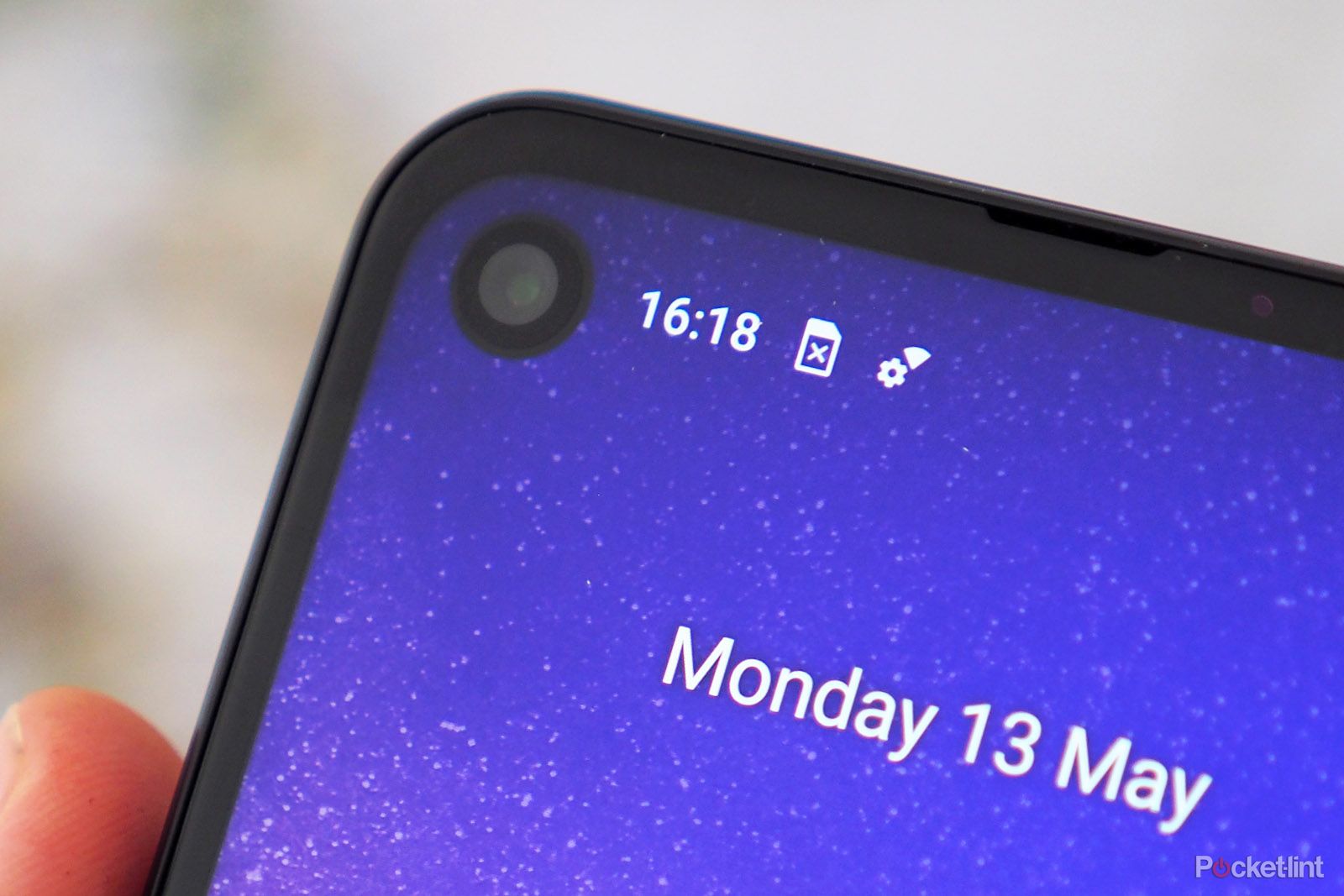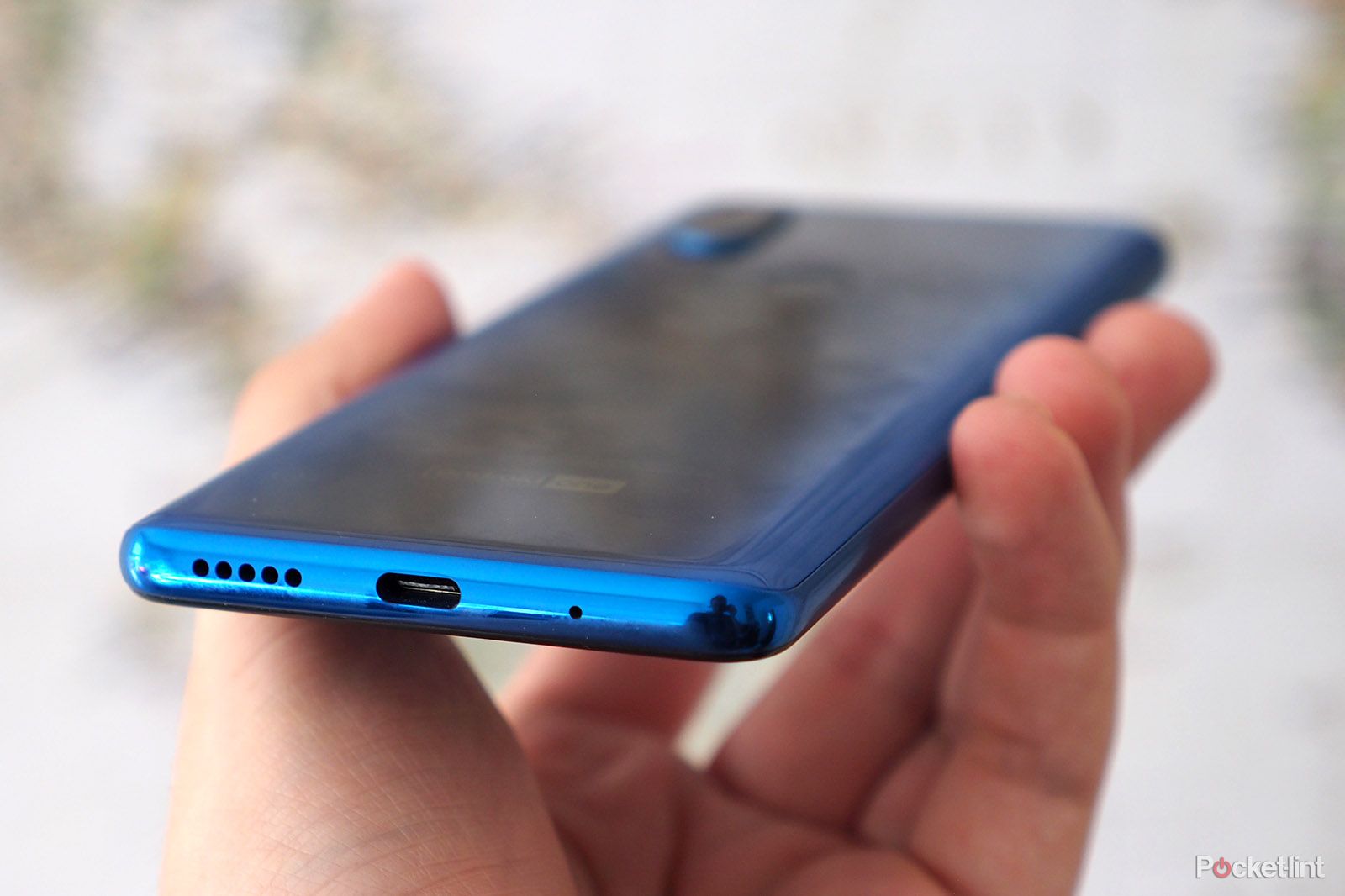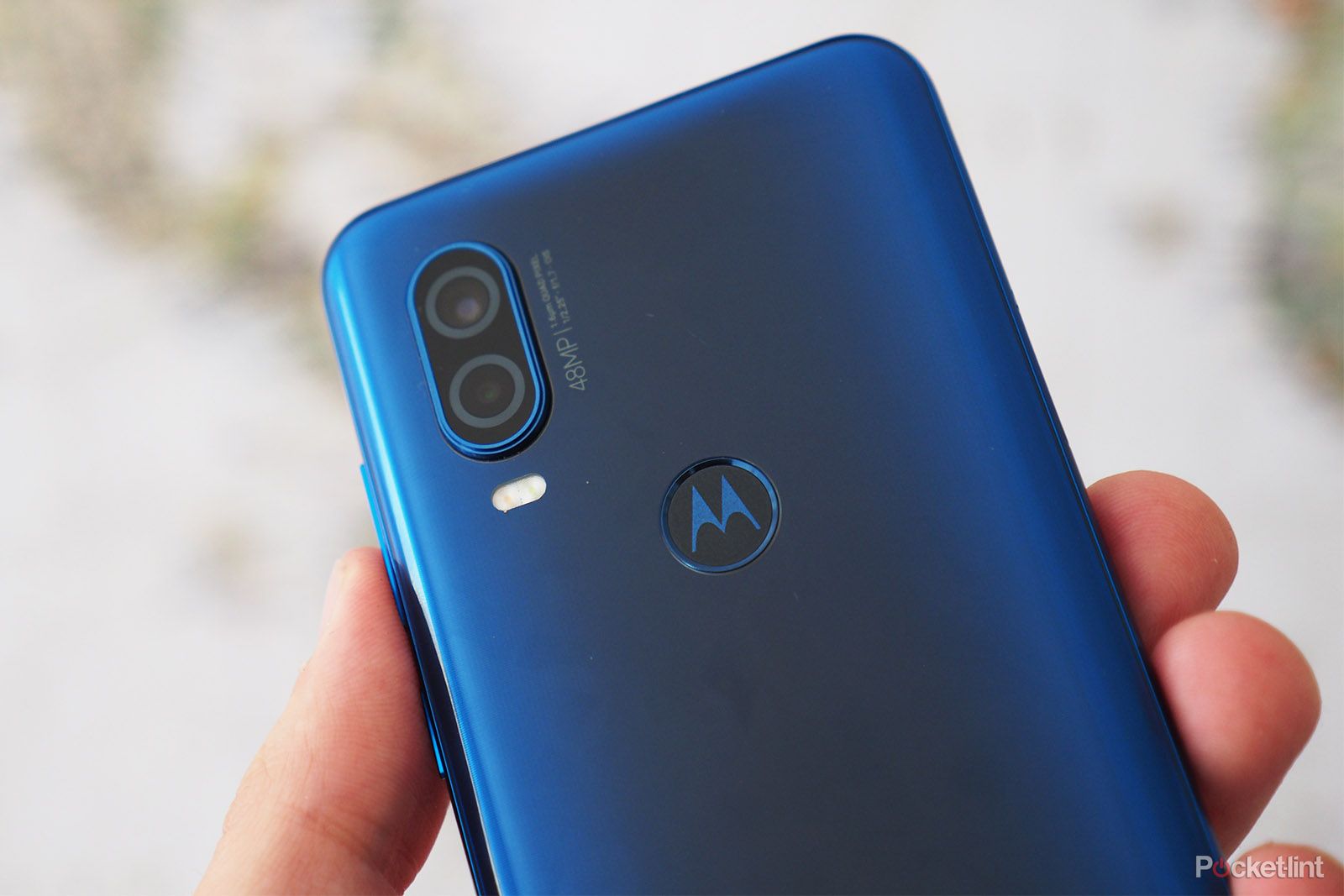When we saw the original Moto One in 2018 it was one of those mid-range phones that filled a gap. Yes, it was fine, it was harmless, but it wasn't really all that exciting. Enter, then, the Moto One Vision and it's a whole different game.
Motorola's second-generation Android One phone takes on the elongated 21:9 screen form-factor - something only Sony had dabbled in up to that point, with its Xperia 10 range - adds a hole-punch front-facing camera, and a clever four-pixels-in-one 48-megapixel rear camera to further up the ante. The Moto is cheaper than the Sony, offering more features for less, while leaving a justifiable gap between itself and the wider-format Moto G8 Plus found elsewhere in the company's roster.
Since its arrival, Motorola has been banging out the One phones in great abandon - there's this, the One Action, One Zoom, One Macro and One Hyper - which has somewhat muddied the proposal (different features, screen aspect ratios and so forth). Of them all, then, is the One Vision's 21:9 play the long shot that truly pays off?
Motorola One Vision
Our quick take
The Moto One Vision isn't just another mid-range phone with no personality, it's a well-priced and specced handset with unique appeal. Motorola has put in some good work on the cameras front which, while not perfect, will give other mid-range phones a run for their money.
Despite the positive pitch, however, the Vision's 21:9 aspect ratio simply won't suit all tasks. It's an elongated format that isn't well matched to a variety of content, just as we said of the Sony Xperia 10 series.
Elsewhere on the market, Motorola is flooding with other One series phones - from Action to Macro to Hyper to Zoom - which muddies the water somewhat in why we need all these different phones with mildly different feature focuses. Of the lot, however, the One is perhaps the most 'normal' and therefore sensible to buy.
So the Moto One Vision isn't perfect, but in one swift motion it gives other mid-range phones plenty to consider, largely just by how well it performs in terms of software and user experience. That 21:9 aspect ratio was a long shot at launch, but one that's paid off in the end.
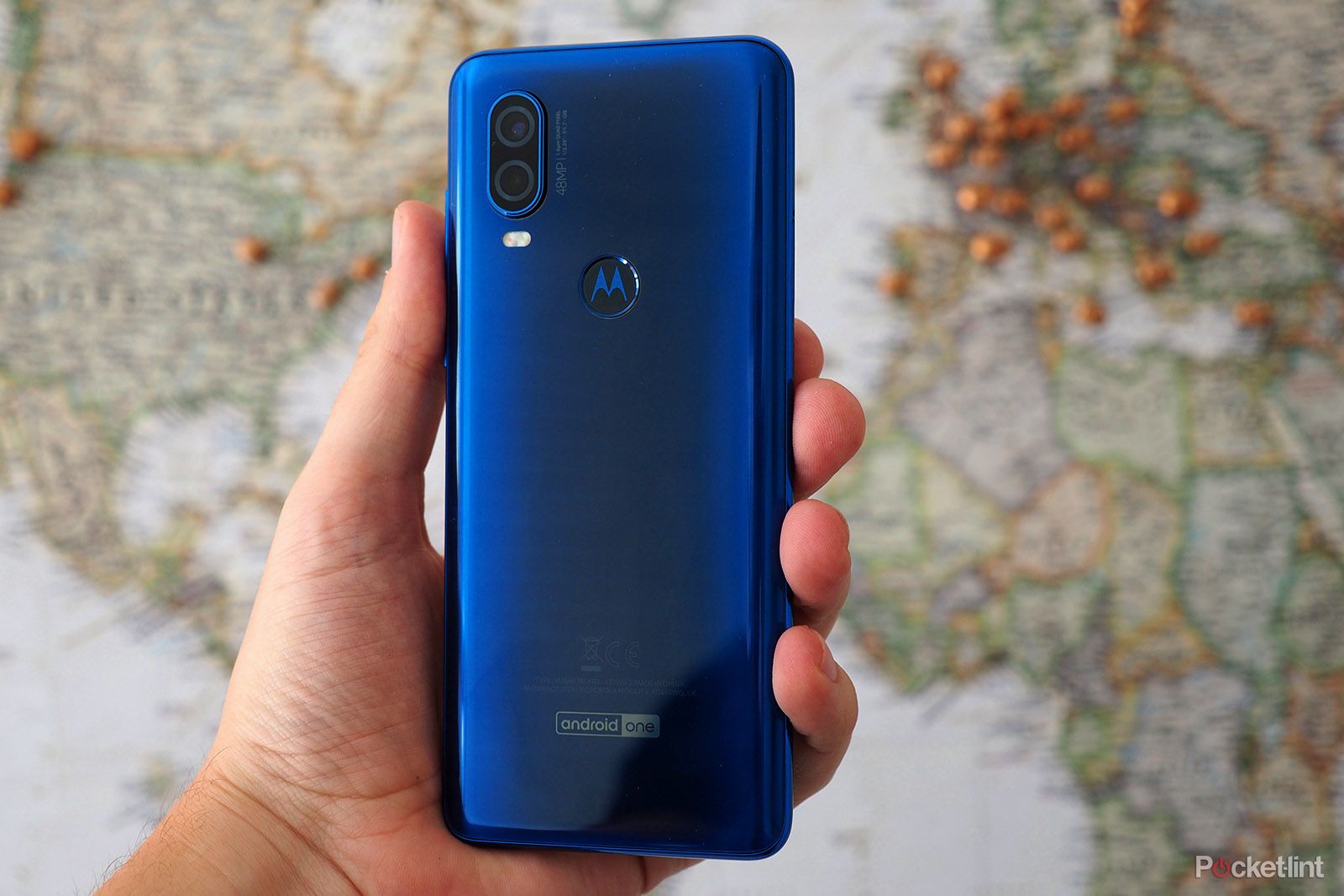
Motorola Moto One Vision - 4.0 / 5
| FOR | AGAINST |
|---|---|
|
|
Motorola One Vision
Design & Display
- 6.3-inch, 21:9 aspect ratio 'CinemaVision' LCD
- Full HD+ resolution (2160 × 1440)
- Hole-punch front-facing camera
- Finishes: Sapphire / Bronze
- Fingerprint scanner to rear
- 3.5mm headphone jack
- Curved glass design
The idea behind a 21:9 display has some sense: you'll find some movies in such an ultra-wide format, meaning they'll fit perfectly to such a screen with no borders. Problem is, there's also a whole lot of content that's made in 18.5:9, 16:9 and other aspects, which will mean this elongated screen format backfires for a lot of content.
It's not all about Hollywood content though. The Moto One Vision's width makes it very easy to hold; that 6.3-inch screen might sound absolutely huge, but it's just tall. You'll want long fingers to get those high-up 'x' boxes to close adverts, but in terms of gripping hold of the phone it won't be forever stretching your palm.
There are two schools of thought surrounding the 21:9 display: it's the future, here to support our content viewing habits; or its over-elongated nonsense because most regular content and doesn't fit well to it. Our view is that a slightly wider form-factor than this makes more sense, but the Vision isn't absurdly narrow - there's still ample room to read text and engage with apps no problems.
Unlike the Sony Xperia 10 Plus, Motorola has also been a fair bit more considerate when it comes to bezels too. The Moto One Vision doesn't have a massive 'chin and forehead', as it were, as it's opted for a hole-punch camera solution - that's why there's a free-floating circle to the top left of the screen and no other notch to be seen anywhere. It's the way a number of companies - including Samsung and Honor - are going when it comes to front-facing camera solutions.
Thing is that hole-punch notch is the largest that we've ever seen. Moto says this is for stability, to avoid the screen cracking under pressure, but we think end-users will find it more distracting than they would like; it's certainly larger than the one found on the Honor 20, for example.
There are a few issues with the screen: its coating seems to scratch easily (we have a number after just a week of use in normal pocket conditions), while the colour isn't especially vibrant (although there is a three-level saturation option within the settings, the Boosted result is the best really).
Elsewhere the Vision is fairly complete for a mid-range phone. It offers a 3.5mm headphone jack, so no compromise there, while the fingerprint scanner can be found nestled in the Moto 'batwing' symbol to the rear, recessed nicely so that it's easy to find and use. The scanner doesn't work especially well, however, compared to a variety of others we've been using over recent months.
Colour finishes are restricted to just two - Sapphire and Bronze to give their full marketing names, meaning 'blue or brown' to the rest of us - with the blue gradient delivering a nicely considered deep tone to that slightly reflective glass rear. It's curved glass too, multi-layered to give that ripppling, reflective effect. It looks good, although we're not sure about the brown at all.
Performance
- 2.2GHz octa-core processor (Samsung Exynos 9609)
- 3,500mAh battery, 15W TurboPower fast-charge
- Google Android One software
- 128GB storage (UFS)
Under the hood and Motorola has taken an interesting turn with its choice of chipset: it's Exynos, from Samsung, not the typical Qualcomm or MediaTek choice. In this instance, the octa-core 2.2GHz processor is the Exynos 9609, which is a tweaked version of what you'll find in the Samsung Galaxy A80.
This is actually rather good news, as the One Vision produces enough clout to handle day-to-day tasks and beyond without any issues. No, it's not a flagship offering, but we've barely noticed - indeed, it's been a better overall performance than the Asus Zenfone 6, which runs on Qualcomm's top-end SD855, but which doesn't offer the most stable of software.
A lot of this is perhaps down to the software: the One Vision runs on Google's Android One platform, which is a tried-and-tested approach and Motorola isn't messing with it much. There's one extra app to handle Gestures, Actions and Display, but that's otherwise it - seeing this solution good enough to rival Google's own Pixel 3a. Although if you want to have the standard three Android softkeys then think again, this is up to the minute and therefore you'll need to get used to gestures on the bottom bar instead.
Note that some of the follow-up One series phones just use 'normal' Android, rather than Android One. Not that you'll really notice a huge difference between the two. Well, none, actually.
Having been using the Moto One Vision for some time, we've found it to be really reliable. No crashes, no quips, no problems. And for a narrow-body phone the 3,5000mAh battery under the hood is fairly considerable in terms of capacity. It's not a great laster, mind, but will push through a full day with at least an hour of gaming on top of everything else and get you to bed with 15 per cent or more remaining. Lighter days might see that figure nearer to 40 per cent.
On balance battery life is fine, but there's mild battery anxiety from this device - it's no Huawei P30 Pro in terms of longevity. A half-way saviour is that if the battery does begin to run low then the 15W TurboCharge means fairly speedy top-ups at the plug. That said, the One Hyper has introduced 45W fast-charging for the company (although without that charger in the box), so Moto can go quicker yet. There's no wireless charging for the One either, but that's to be expected at this level - and we don't miss it to any degree, as it's a rarely used feature.
Cameras
- 48MP main sensor, 1.6um pixel size, f/1.7 aperture
- Quad Pixel technology (outputs 12MP images only)
- 5MP depth sensor for portrait mode
- Night Vision mode for night shots
- AI Shot Optimisation suggestions
- Optical image stabilisation (rear)
- 25MP front-facing (6MP output)
- 4K video capture
Although that punch-hole front-facing camera doesn't look the greatest, the camera beneath is shouting about how high-res it is, offering 25-megapixels of resolution. By default it captures 6MP shots, though, using what Motorola is calling Quad Pixel technology. In simple terms it uses four pixels to produce one, using all that data to over-sample colour and detail to produce a better result at a quarter of the size.
The same tech is used to the rear: the main camera, which is a 48MP unit sourced from Samsung (before Samsung even used it in its own phones, funnily enough), also uses the Quad Pixel technology. You point and shoot, but don't get an unnecessarily massive file - you get a manageable 12MP shot instead. Now, the idea of quad-sampling isn't a new one. The other 48MP sensor on the market is one of Sony's IMX offerings, which performs in much the same way as you'll find in its Honor and Xiaomi implementations.
What's perhaps more impressive from Motorola's point of view is that this technology isn't found in many phones around this price point. The One Vision is cheaper than Moto's own G8 Plus, which certainly gives the Vision a lot to shout about. Hence the name, eh? Compared to Sony's Xperia 10 Plus, Moto has kicked that camera offering to the side here, with a faster and better Camera app experience from the off - although it does feel compressed within that 21:9 screen.
The key thing people will most likely want to know, though, is how good is the image quality? In the right conditions the results are pretty decent: a close-up shot of flowers shows lots of colour and detail, with some processing evident that prevents it from being the sharpest result ever. But that's indicative of how well this lens and 48MP sensor can perform.
The rear is dual lens, with the second lens used for depth reading - useful for blurred backgrounds and lighting effects in portrait mode as you'll find on, well, just about every current phone these days. The results are pretty good, too, although there's the same hit-and-miss ratio as per its competitors. We do like the simplified selector to present how blurred the background is, as it removes the complexity of trying to figure out an aperture value slider - which is what most of Moto's competition uses.
There are a variety of modes available too. The One Vision has auto smile capture, face-tracking for up to five faces, auto scene recognition, a host of colour-isolating and animation captures and more. Of them all its the shot optimisation artificial intelligence which is interesting. In a similar way to Huawei's offering in the P30 Pro, Moto's AI will judge a scene and then auto-apply the most relevant shooting mode. Point the camera at food, it'll show you food mode, with a toggle on/off button to the bottom should it be inaccurate or you just don't want it in action. The camera will do the same for portraits, other subject matter and lighting conditions as it sees fit. That's good going for a sub-£300 phone.
Even low-light is tackled in an interesting way, thanks to Night Vision. You might have heard about Google's own Night Sight mode on its Pixel handsets, which is close to magic when it comes to pulling unseen detail out of nighttime or low-light scenes. The Moto One Vision works on similar principles: it captures multiple images extremely rapidly, the optical stabilisation ensuring this is possible hand-held, analyses the data it can use from them, then uses algorithms to assess the lighting conditions and pull everything together in a flash. Thing is, it's not nearly as impressive as Google's Night Sight, with the Moto solution often being barely discernable from a normal photo shot. Big claims with not-so-big delivery on that front then - not that shots at night are bad looking by any means.
Overall, Motorola is showing that an affordable phone can remain competitive on the cameras front. We think the results here will give other mid-level handsets a run for their money, even if they're not the most refined results you'll ever see from a phone camera.
The market does move fast, though, as within six months of the One Vision launching, Moto had output the One Zoom, with dedicated optical zoom, and the One Hyper, with a higher-resolution 64MP main rear sensor. It's always onwards and upwards in this world of tech.
Motorola One Vision
To recap
This well-priced and specified phone shows that a mid-range device can deliver the goods without costing the earth. We'd have even greater things to say about it if the screen aspect ratio wasn't as elongated and the punch-hole wasn't as huge. Oh, and now that there are droves of Moto One phone options - Hyper, Action, Zoom, Macro - the water has become somewhat muddied.

